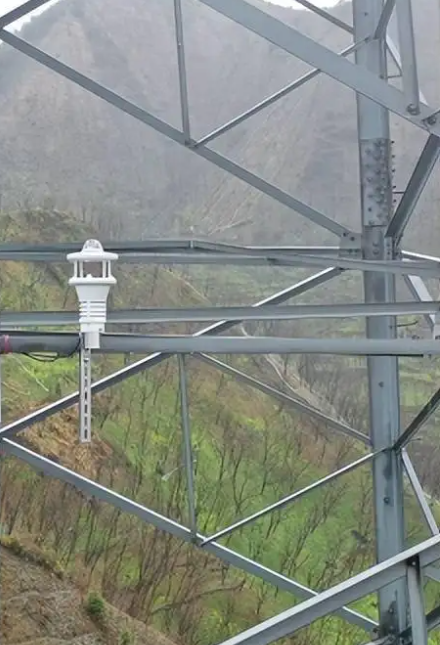Micrometeorology refers to the variability of local climate in the near-surface layer from that of the surrounding area due to differences in surface roughness, topographic relief, differences in vegetation, and so on. For example, when air currents blow through mountainous areas from open areas, they are forced to lift due to terrain obstruction, which in turn produces phenomena such as precipitation or clouds. This micro-meteorological phenomenon is a considerable threat to power transmission lines.
Take the conductor over ice as an example, that is, when the air is wet and the temperature is below 0 ℃, water vapor will condense on the surface of the conductor to form freezing rain and mixed freezing. When encountered when the snowfall weather, but also the formation of snow. These ice will not only increase the weight of the conductor, but also lead to the conductor arc sag increase. When the weight of the ice cover exceeds the capacity of the conductor, insulators and fittings, towers, there will be broken lines, fallen towers and other accidents. Strong winds in micrometeorological regions can also bring trouble to transmission lines. When the wind speed reaches a certain value, the conductor will occur high-frequency low-amplitude vibration, causing fatigue of the conductor material, which leads to broken strands, broken wire. And if this time is superimposed on the conductor covered with ice, the degree of harm will be double.
In order to further improve the safe operation of transmission lines and prevent the adverse effects of severe weather on the power grid, DX-WPS100-QX Transmission line micro-weather online monitoring device (power weather station). The device can real-time monitoring of transmission lines a variety of meteorological parameters changes, predict the degree of impact of meteorological changes and trends, to facilitate the early preparation of countermeasures to ensure the normal operation of transmission lines.
Key Features
1, data acquisition: the use of high-performance micro-meteorological sensors, high measurement accuracy, real-time collection of wind speed, wind direction, temperature, humidity, air pressure, rainfall and light radiation and other meteorological parameters, capable of cyclic storage of more than 90 days of meteorological data.
2、Acquisition mode: automatic acquisition and controlled acquisition, automatic acquisition automatically acquires and sends meteorological parameters according to the set time interval, with a small interval of 3 minutes, and the default is to be sent at the whole hour; controlled acquisition can manually and remotely issue the acquisition command in the background, and immediately send back the data.
3、Data transmission: 4G/5G/WIFI communication transmission is adopted, and the communication with the main station can adopt VPN special channel.
4、Intelligent analysis and management: The background system carries out comprehensive analysis of the returned data, generates data reports, and establishes meteorological data model to accurately predict future weather trends.
Technical Parameters
1, temperature: measuring range: -40 ° ~ 80 ° C; resolution: 0.1 ° C; accuracy: ± 0.3 ° C
2, humidity: measurement range: 0 ~ RH; resolution: 0.5%; precision: 3% RH
3、Wind direction: Measuring range: 0~360°; Resolution: 0.1°; Accuracy: ±3°.
4, wind speed: measurement range: 0 ~ 60 m / s; resolution: 0.05 m / s; accuracy: ± 0.3 m / s
5, air pressure: measurement range: 10 ~ 1100hPa; resolution: 0.1hPa; accuracy: ± 0.5Pa
6. Rainfall: Measuring range: 0-4mm/min; resolution: 0.2mm; accuracy: ±0.4mm (≤10mm); ±4% (>10mm)
Optical radiation: Measuring range: 0~1400W/m2; Resolution: 1W/m2; Precision: ≤5%.








